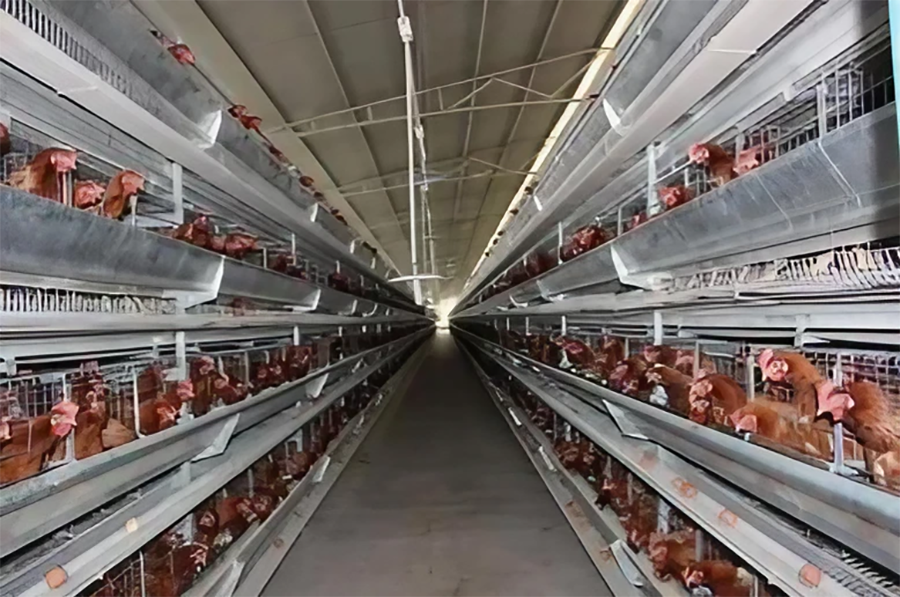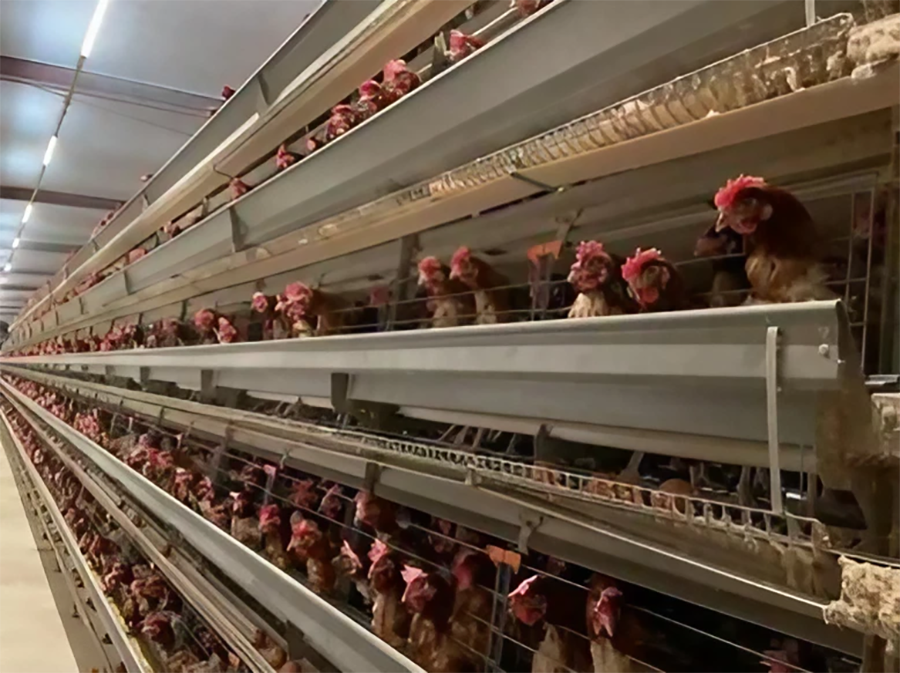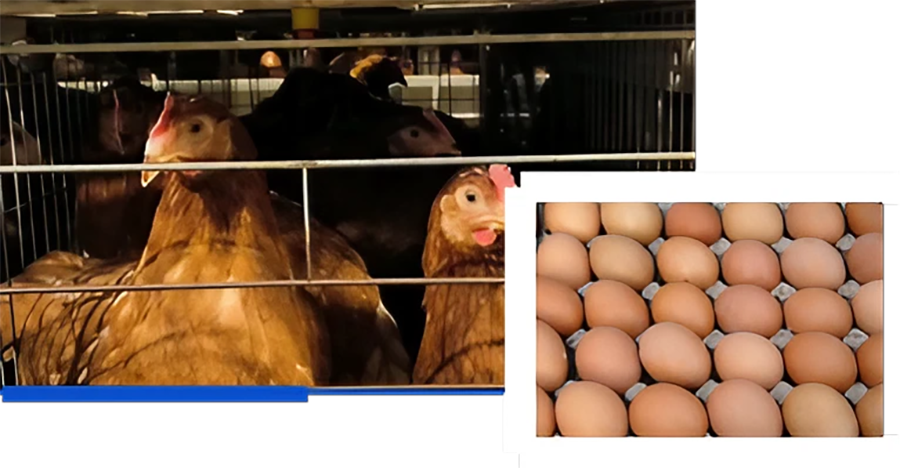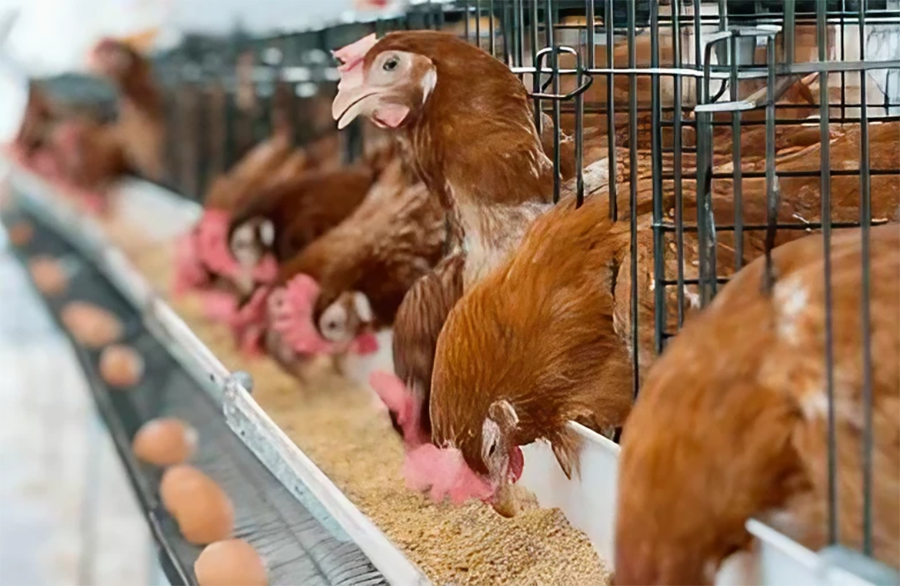Copyright © Shandong Wedo Agritech Co., Ltd. All Rights Reserved. Site Map
- +86-15253660961
- service@wedoagritech.com
- 67-2, Headquarters Base, Beihai Road, Weifang, Shandong

Changes in the production ramp-up period of laying hens

The production ramp-up period of laying hens is traditionally defined as 18-20 weeks. According to the long-term production data in the Hy-Line Brown Feeding and Management Manual, the exact production ramp-up period should be 17-30 weeks. The main changes in this stage are referred to as "one small, two large, and three increases". The specific changes are as follows:
> One small
Laying hens have a small food intake. At 18 weeks, the Hy-Line Brown's food intake is 73-88g/bird/day, and at 30 weeks, the Hy-Line Brown's food intake is 109-117g/bird/day. It takes 12 weeks to reach the maximum food intake.
> Two major
Stress and physiological changes. The main stresses include changes in the feeding environment and feed. The physiological changes are mainly changes in the endocrine system, changes in the burden of the digestive and absorptive organs, and changes in the reproductive system.

> Three increases
Increase in egg production rate, egg weight and body weight. The specific change data is shown in the chart.

In about 10 weeks, body weight increases to more than 350g, egg weight increases to more than 4.5g, egg production rate increases linearly, while food intake increases slowly. This contradiction causes various problems at this stage.
Common problems in the production ramp-up period of laying hens

01 Slow growth in food intake
The main reasons include feed change stress and excessive energy levels in the rearing period feed. The rearing feed includes high-fiber raw materials. The transition to egg-laying feed has reduced fiber, increased ash, and increased calcium content. Secondly, if the energy level of the rearing feed is too high (over 2750kcal/kg), it will inhibit the increase in appetite during the production ramp-up period, resulting in a slow increase in food intake.
02 Weight loss during the ramp-up period
During this stage, the chickens are more sensitive and in a highly stressful stage. If they are not managed properly or if there are health problems with the chickens, they will not gain weight or even lose weight, which will lead to a slow climb. Even if they reach the peak normally, the egg production rate will drop rapidly in the subsequent production stage.
03 Intestinal problems
Changes in feed, raw materials, environmental stress, physiological stress, etc. can all lead to intestinal problems at this stage, mainly manifested as physiological diarrhea, adenomyosis, enteritis and enterotoxins, etc.
04 The first-time birth weight does not meet the standard
Insufficient food intake and low digestion and absorption efficiency due to feed change stress or intestinal health may lead to problems such as substandard weight, poor flock uniformity, and low abdominal fat deposition.

05 Egg production rate increases slowly
Generally, failure to meet the initial laying weight standard and poor uniformity of the flock are the main reasons for the slow increase in egg production during the ramp-up period.
06 Egg weight does not meet the standard
The main factor affecting egg weight is the body weight at the start of laying. Most data show that the egg weight of laying hens in the first period of laying is greatly affected by their body weight at the start of laying.
07 The number of dead customers increases
During the production ramp-up phase, the chickens undergo a series of physiological changes, including the internal environment, endocrine system, and digestive system, which become more open. Liver diseases, digestive system diseases, Escherichia coli secondary diseases, synovial plasma infections, and other problems are common during this phase, and sporadic feeding increases.
Matters needing attention during the laying period of laying hens

1. Nutritional adjustment
Under the premise of ensuring that the energy level of feed in the late rearing period is not too high, the energy and protein levels in the ramp-up stage of production are improved. It is generally recommended to add more than 1% of oil and fat and more than 26% of soybean meal. After the flock climbs smoothly to the peak, it is stabilized for 3-4 weeks and then the formula is adjusted according to production needs to strengthen the application of anti-stress and additive products. Wedo Agricultural and Animal Husbandry laying hen premix strengthens basic nutrition (complex vitamins, trace elements, amino acids) while increasing the application of endogenous active substances and naturally extracted anti-stress additives to maintain efficient production.
Stone addition procedure (recommended addition amount for 3% and 5% premixes on site)

When adding stone powder, pay attention to the increase and observe the stool condition in time. If there are intestinal health problems, auxiliary drug treatment is required.
2. Feeding and management
Lighting program setting for start of production: The factor that determines whether it is appropriate to add light to the flock is the flock weight rather than the age. After entering 16 weeks of age, if the average weight of the flock exceeds the breed standard by 5-10%, light can be added. Generally, light is added for 1 hour per week in the first three weeks, and then half an hour per week. After 15 hours, it can be maintained for two weeks and then light is added for 1 hour or twice, which can better stimulate the flock to start production.
Feeding procedure: There is a conflict between the chickens' food intake, growth and production at this stage. It is recommended to feed the chickens at least three times and add light for 1 hour at midnight. When adding light at midnight, the dark period should be at least 3 hours, so that there is no excessive stress on the chickens.
Water quality management: The daily water intake of the chickens can most directly reflect the health status of the chickens. Generally, the ratio of water intake to food intake is 1.5-2:1. The water intake is higher in high temperature seasons, so sufficient drinking water and water quality must be guaranteed. Dimension service is equipped with pulse water line cleaning equipment, and the water line is cleaned regularly to ensure the health and nutrition of water.
3. Health care
During the climbing stage, the liver transformation burden increases, the reproductive system develops and changes rapidly, and attention is paid to the health of the digestive system, fallopian tubes, and liver.
4. Picking chickens
Due to the influence of previous diseases, a small number of chickens have lost their egg-laying ability. It is recommended to pick out and eliminate them in time at around 200 days of age, and use the marking method, chicken touching method, and observation method to reduce costs and increase efficiency.